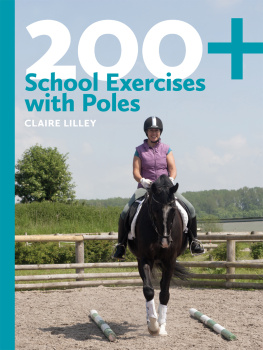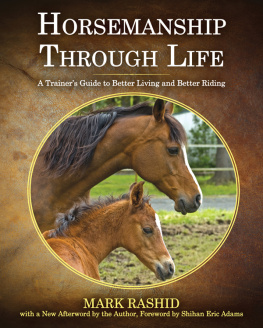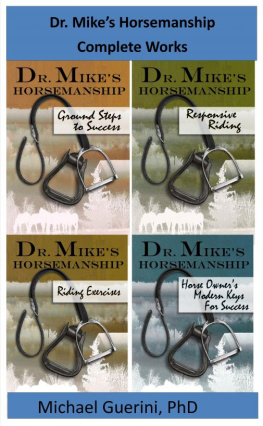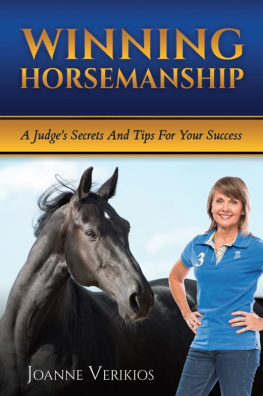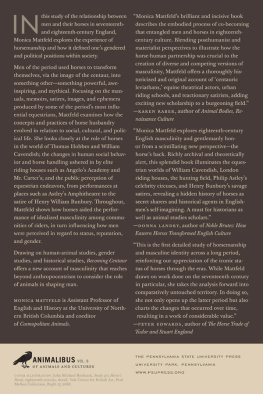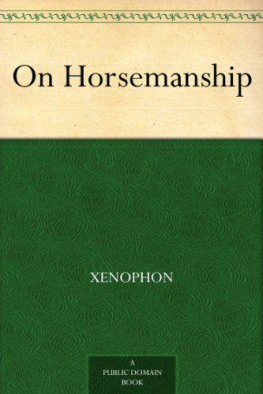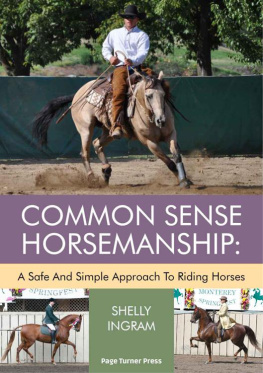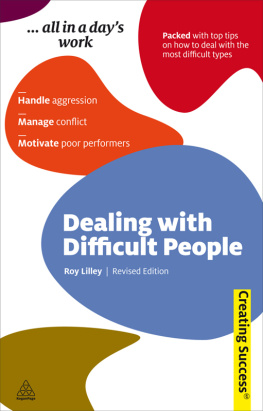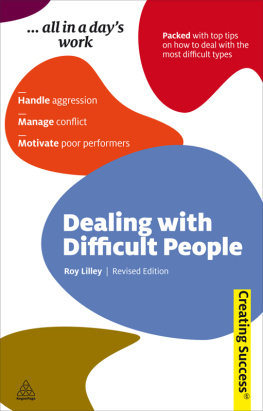Claire Lilley - The Psychology of Horsemanship
Here you can read online Claire Lilley - The Psychology of Horsemanship full text of the book (entire story) in english for free. Download pdf and epub, get meaning, cover and reviews about this ebook. publisher: Crowood, genre: Home and family. Description of the work, (preface) as well as reviews are available. Best literature library LitArk.com created for fans of good reading and offers a wide selection of genres:
Romance novel
Science fiction
Adventure
Detective
Science
History
Home and family
Prose
Art
Politics
Computer
Non-fiction
Religion
Business
Children
Humor
Choose a favorite category and find really read worthwhile books. Enjoy immersion in the world of imagination, feel the emotions of the characters or learn something new for yourself, make an fascinating discovery.
- Book:The Psychology of Horsemanship
- Author:
- Publisher:Crowood
- Genre:
- Rating:4 / 5
- Favourites:Add to favourites
- Your mark:
- 80
- 1
- 2
- 3
- 4
- 5
The Psychology of Horsemanship: summary, description and annotation
We offer to read an annotation, description, summary or preface (depends on what the author of the book "The Psychology of Horsemanship" wrote himself). If you haven't found the necessary information about the book — write in the comments, we will try to find it.
The Psychology of Horsemanship — read online for free the complete book (whole text) full work
Below is the text of the book, divided by pages. System saving the place of the last page read, allows you to conveniently read the book "The Psychology of Horsemanship" online for free, without having to search again every time where you left off. Put a bookmark, and you can go to the page where you finished reading at any time.
Font size:
Interval:
Bookmark:

The Psychology
of Horsemanship
UNDERSTANDING THE HORSE AND YOU
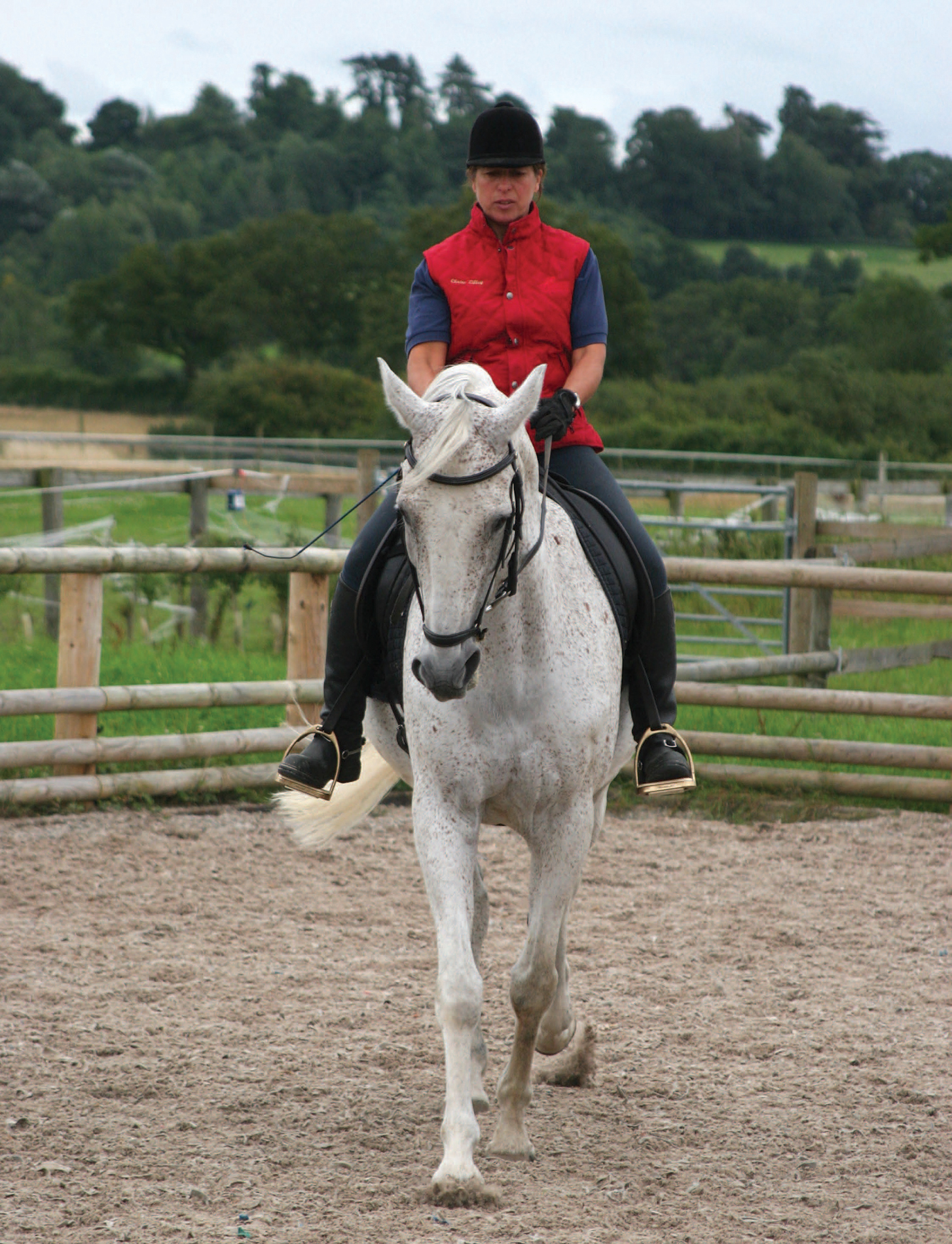
The Psychology
of Horsemanship
UNDERSTANDING THE HORSE AND YOU
CLAIRE LILLEY
J.A.Allen
First published in 2020 by
by J.A. Allen
J.A. Allen is an imprint of
The Crowood Press Ltd
Ramsbury, Marlborough
Wiltshire SN8 2HR
www.crowood.com
This e-book first published in 2020
Claire Lilley 2020
All rights reserved. This e-book is copyright material and must not be copied, reproduced, transferred, distributed, leased, licensed or publicly performed or used in any way except as specifically permitted in writing by the publishers, as allowed under the terms and conditions under which it was purchased or as strictly permitted by applicable copyright law. Any unauthorised distribution or use of this text may be a direct infringement of the authors and publishers rights, and those responsible may be liable in law accordingly.
British Library Cataloguing-in-Publication Data
A catalogue record for this book is available from the British Library.
ISBN 978 1 908809 90 2
Photos by Dougald Ballardie
Illustrations by Carole Vincer
Disclaimer
The author and publisher do not accept responsibility in any manner whatsoever for any error or omission, or any loss, damage, injury, adverse outcome, or liability of any kind incurred as a result of the use of any of the information contained in this book, or reliance upon it.
Frontispiece
Claires equine partner for many years was Carina Amadeus. He was a very special horse and the inspiration for much of her work.
Introduction
There are fundamental elements that constitute horsemanship: mental, physical and spiritual. As human beings wanting to bond with our horses, we must use all our available skills: our senses, our intelligence, our physical body awareness and intuition. Horses are better at doing this than we are, so there is a lot for us to learn from our equine partners. Historically, horsemanship is about developing the partnership between horse and rider. It is about developing mutual trust, respect and understanding and love the foundations of a rock-solid relationship.
Horses have been domesticated for centuries, and lived with mankind as family, depending on each other for the very basic elements of life: food, shelter and companionship. Man and horse went to war together, each relying on the other for survival. Many of the instigators of the classical schools of horsemanship, such as the Spanish Riding School in Vienna, had a military background, demonstrating their prowess and skills in training their horses. Horses continue to have an important presence in the police force and the army, and are particularly impressive in the many royal duties the Household Cavalry performs.
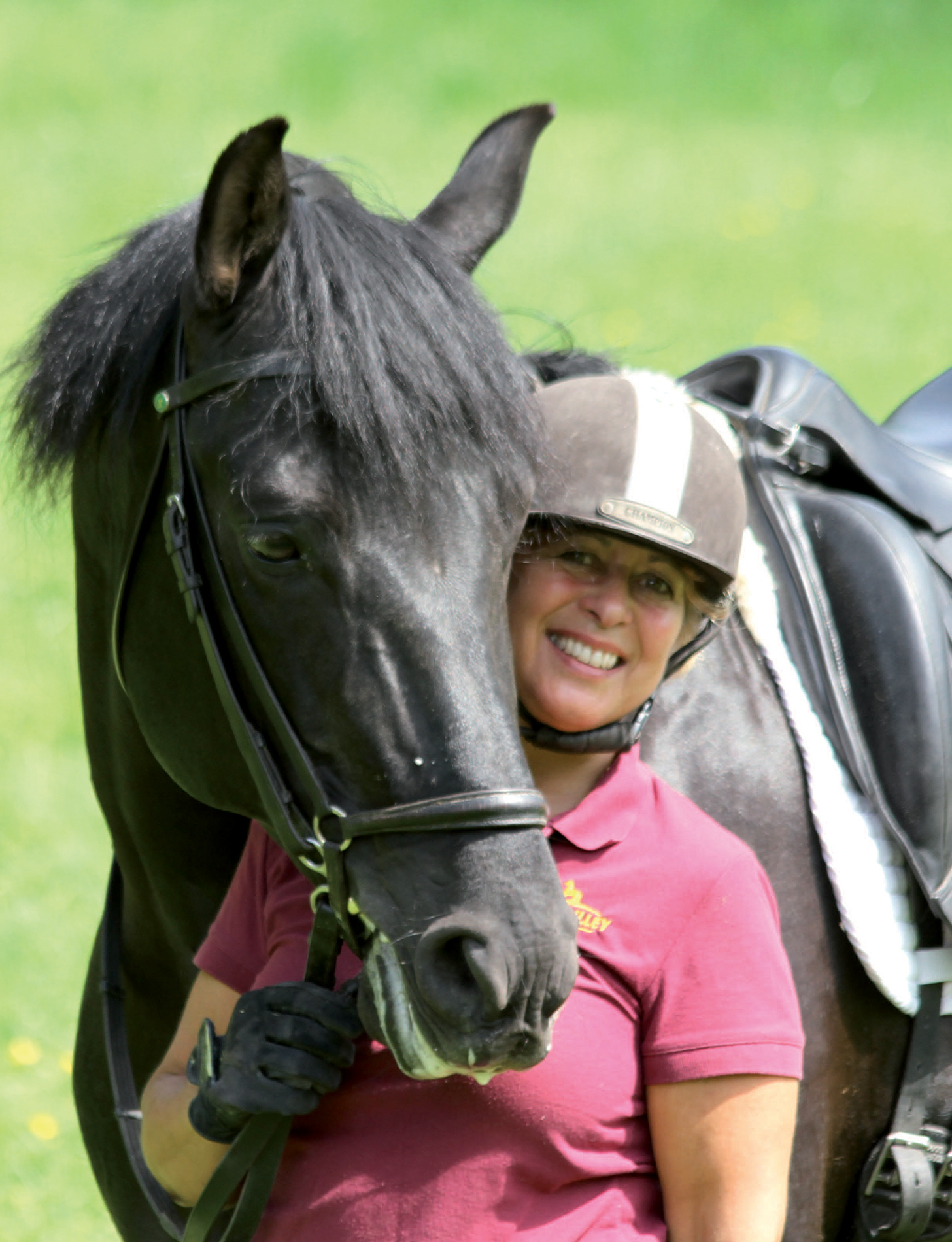
Horsemanship is about developing the relationship between horse and rider.
In more recent times, without the need to take horses into battle, they have become important in sport. While hunting and racing have been around for many years, the old military influence was influential in the development of many more newer equestrian sports. For instance, the sport now called eventing was originally based on the way to prepare cavalry horses for active service and was, for some time, called the military because of this, before being known as horse trials and more recently and informally by its current name. It is also the case that many of the early proponents of showjumping and dressage were from military backgrounds and, of course, cavalry officers were influential in the introduction of polo to the western world.
Equestrian sport generally has flourished since becoming a regular part of the Olympics, first seen in Paris in 1900 as an individual showjumping competition, then from 1912 in Stockholm to the present day, initially via dressage, showjumping and eventing, with other disciplines now included, such as driving, vaulting and the modern pentathlon.
In modern times, while horses in some areas are still used as pack and draught animals, for ploughing and other farm work, most are owned for pleasure and sport, or simply for company and companionship. In respect of the latter, they also have special value in psychotherapy, offering unconditional positive regard by accepting people for who they are, without judgement or preconceptions and showing a sensitivity to human emotions and body language.
An insight into gaining that special bond between people and horses, where the magic just happens, is the aim of this book: to become familiar with the mental and physical responses in the human body to a degree whereby being with a horse, whether riding or handling, feels natural, easy. This is about not being in the way of the horse, but guiding, listening, feeling. Being truly at one with a horse, with mind, body and soul, can be an amazing experience. This book explores the fascinating world of the human/horse relationship and the implications of this bond on life in general for example, relationships, self-awareness and communication.
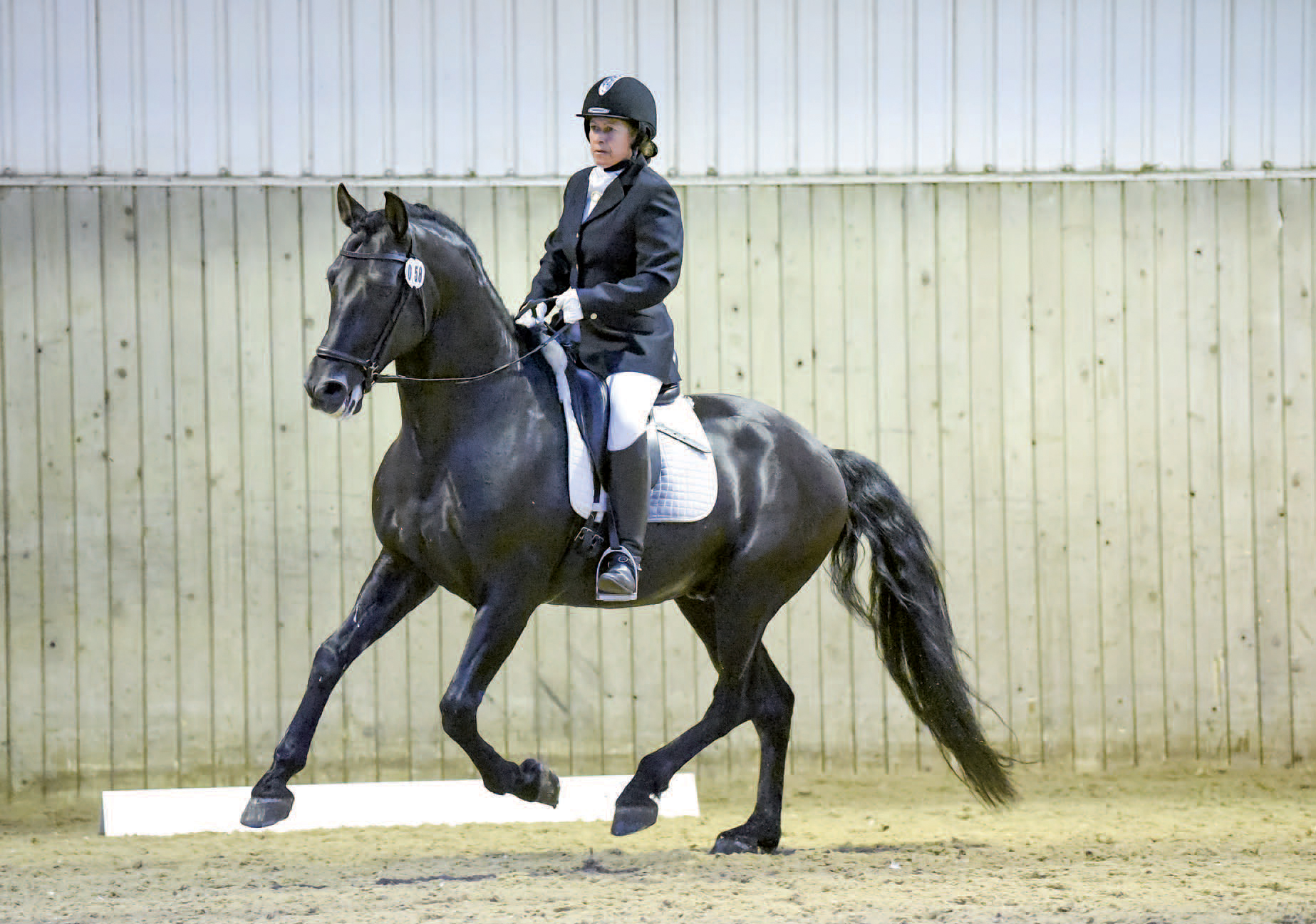
A special bond between horse and rider where the magic just happens is a wonderful thing. Even with a relatively new partnership, as with this horse and rider, there is a sense of true connection between them. (Photo by NakPhotography)
Horses mirror our feelings and our unconscious processes; being with them and developing a relationship with a horse is very special. Taking time to really notice what is going on in relation to the horse develops self-awareness, not only physically, but also mentally. Learning about how a human being relates to a horse can influence life skills for example, coping with stressful situations, perhaps in work or sports environments. The possibilities are endless.
Horses are very aware of non-verbal communication: our body language, how calm and confident we are, or not. This applies to all aspects of horsemanship, whether we are riding or handling them, or simply in their presence. They pick up things about us we are not even aware of! Understanding how a horse interprets what we do helps to create a special bond, reaping so many benefits in training. In contrast, issues that arise from misunderstanding can have a hugely detrimental effect on progress.
This book is written from my own experience as a horse owner, riding instructor and psychotherapist. The views are my own, supplemented by my own personal research, along with other findings and viewpoints, which can be found in the reference section. Research into the realms of horse psychology and the relationship with humans is continually evolving. How the mind and body of both horse and rider function together is fascinating to me and even more so in partnership with the horse. I am no expert on neuroscience, but my basic understanding of how the brain works is integrated with practical experience to hopefully shed light on the fascinating world of horsemanship. Having worked in the equestrian industry for many years as a trainer of horses and teacher of riders, I came to the conclusion that in order for horse and rider to progress as a partnership, a deeper knowledge of psychology would be of benefit for human pupils. This would help them to assess their own mental processes, doubts and fears. This quest for knowledge has led me along the path of psychotherapy, finding a new vocation and a renewed enthusiasm for riding, as well as a new career. Understanding the workings of the equine mind has benefited my own relationship with my equine partners, and brought further insight and fascination into training horses. My hope is that this book will inspire curiosity and encourage the asking of questions by horse owners, equestrian professionals and those working in the mental health sector, where relationships are so crucial to human development.
Font size:
Interval:
Bookmark:
Similar books «The Psychology of Horsemanship»
Look at similar books to The Psychology of Horsemanship. We have selected literature similar in name and meaning in the hope of providing readers with more options to find new, interesting, not yet read works.
Discussion, reviews of the book The Psychology of Horsemanship and just readers' own opinions. Leave your comments, write what you think about the work, its meaning or the main characters. Specify what exactly you liked and what you didn't like, and why you think so.


